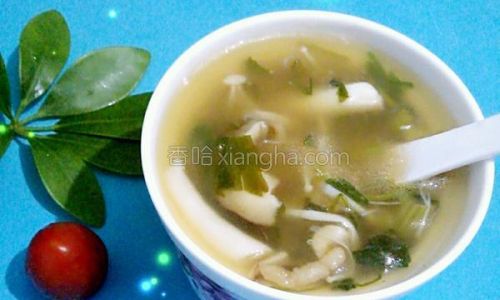Introduction
In the realm of citrus fruits, kumquats stand out for their unique size, flavor, and nutritional profile. These tiny, orange-like fruits are not only delightful to eat but also pack a punch of health benefits. From their rich vitamin C content to their antioxidant properties, kumquats offer a myriad of health advantages. However, to fully harness these benefits, it’s crucial to understand how to consume kumquats effectively. This guide delves into the intricacies of maximizing the effects of eating kumquats, exploring various preparation methods, potential health benefits, and tips for incorporating them into your daily diet.

Understanding Kumquats: A Brief Overview
Kumquats (Fortunella spp.) belong to the Rutaceae family, which also includes oranges, lemons, and limes. Unlike their larger citrus counterparts, kumquats are small, typically around 1-2 inches in diameter, with a thin, edible skin that is sweet while the flesh is tart and juicy. There are several varieties, including the oval-shaped Nagami kumquat and the round, glossy Marumi kumquat, each with its unique taste and texture.
The appeal of kumquats lies not only in their taste but also in their nutritional value. They are a good source of vitamins A and C, dietary fiber, potassium, and various antioxidants. These nutrients contribute to a range of health benefits, from boosting the immune system to aiding digestion.
Health Benefits of Kumquats
Before discussing how to eat kumquats for optimal effect, let’s explore some of the remarkable health benefits they offer:
-
Rich in Vitamin C: Kumquats are an excellent source of vitamin C, essential for immune function, skin health, and tissue repair. Regular consumption can help prevent scurvy and support the body’s defenses against infections.
-
Antioxidant Properties: The antioxidants in kumquats, including flavonoids and carotenoids, help combat oxidative stress, reducing the risk of chronic diseases such as heart disease, cancer, and diabetes.

-
Dietary Fiber: The fiber content in kumquats promotes healthy digestion, aids in weight management, and may lower the risk of constipation and certain gastrointestinal disorders.
-
Potassium: High potassium intake supports heart health by maintaining normal blood pressure levels and fluid balance in the body.
-
Vitamin A: This vitamin is crucial for vision, immune function, and reproductive health. Kumquats provide a natural source of beta-carotene, which the body converts to vitamin A.
-
Anti-Inflammatory Effects: The anti-inflammatory compounds in kumquats may help reduce inflammation throughout the body, benefiting conditions like arthritis and inflammatory bowel disease.
How to Eat Kumquats for Optimal Effect
Now that we’ve established the health benefits of kumquats, let’s explore various ways to consume them for maximum effect.
Raw Consumption

One of the simplest and most effective ways to enjoy kumquats is by eating them raw. Here are a few tips:
- Whole Kumquats: Wash the kumquats thoroughly and eat them whole. The sweet skin and tart flesh create a delightful contrast in flavor.
- Chilled Kumquats: For a refreshing treat, chill the kumquats in the refrigerator before eating. This enhances their juiciness and makes them an ideal summer snack.
- Kumquat Salad: Incorporate sliced kumquats into fruit or vegetable salads. Their unique flavor complements a variety of greens, cheeses, and nuts.
Cooking and Baking
Cooking and baking with kumquats can bring out their flavors and create delicious dishes while preserving their nutritional value.
- Candied Kumquats: This classic preparation involves simmering kumquats in a simple syrup until they are coated in a sweet, glossy glaze. Candied kumquats can be enjoyed as a snack, used as a topping for desserts, or incorporated into baked goods.
- Kumquat Jam: Make a delicious jam by cooking kumquats with sugar and a bit of lemon juice. This preserve can be spread on toast, used as a filling for pastries, or enjoyed with yogurt or ice cream.
- Kumquat Marmalade: Similar to jam, marmalade includes the peel of the fruit, providing a tangy, bittersweet flavor. It’s perfect for spreading on bread or using as a glaze for meats.
- Baking: Add chopped or sliced kumquats to muffins, cakes, cookies, and pies. Their citrusy flavor enhances the taste of baked goods, and the natural sweetness of the skin adds a delightful texture.
Beverages
Infusing kumquats into beverages is another effective way to enjoy their benefits.
- Kumquat Tea: Brew a tea by steeping kumquat slices in hot water. Add honey or lemon for extra flavor. This tea is refreshing and aids in digestion.
- Kumquat Infused Water: Place a few sliced kumquats in a pitcher of water and let them steep overnight. This infused water is hydrating and adds a subtle citrus flavor.
- Cocktails and Mocktails: Kumquats can be muddled into cocktails or mocktails, adding a tangy, sweet-tart element to your favorite drinks.
Preserves and Condiments
Preserving kumquats allows you to enjoy them throughout the year.

- Pickled Kumquats: Pickling kumquats in a vinegar-based solution preserves their texture and flavor. Pickled kumquats can be used as a garnish, relish, or condiment.
- Kumquat Jelly: Make a jelly by cooking kumquat juice with sugar and gelatin. This jelly can be served as a dessert or used as a topping for pancakes or waffles.
Incorporating Kumquats into Meals
Kumquats can also be incorporated into savory dishes, adding a unique citrus twist.
- Salsa: Combine diced kumquats with tomatoes, onions, cilantro, and jalapeños for a tangy, refreshing salsa that pairs well with chips or as a topping for grilled meats.
- Marinades and Glazes: Use kumquat juice or puree as a base for marinades or glazes for meats, poultry, or seafood. The acidity tenderizes the meat and adds a layer of flavor.
- Salad Dressings: Incorporate kumquat juice into vinaigrettes for a zesty, tangy dressing that complements a variety of salad greens and vegetables.
Tips for Maximizing Kumquat Benefits
To ensure you’re getting the most out of your kumquats, consider the following tips:
- Seasonal Selection: Kumquats are typically available from fall to winter. Choose fruits that are firm, bright in color, and free of bruises or mold.
- Storage: Store fresh kumquats in the refrigerator in an airtight container for up to two weeks. For longer storage, consider freezing or preserving them.
- Variety Exploration: Experiment with different varieties of kumquats to find the one that best suits your taste preferences.
- Moderation: While kumquats are nutritious, they are still high in natural sugars. Enjoy them in moderation, especially if you’re watching your sugar intake.
- Combination with Other Foods: Pair kumquats with foods that enhance their nutritional benefits. For example, combining them with leafy greens can boost your intake of vitamins A and K.
Conclusion
Kumquats are a unique and nutritious addition to any diet. By understanding how to prepare and consume them effectively, you can maximize their health benefits and enjoy their delightful flavor. Whether eaten raw, cooked, or incorporated into beverages and meals, kumquats offer a versatile way to boost your intake of vitamins, antioxidants, and other essential nutrients. So, the next time you see these tiny, orange fruits at your local market, don’t hesitate to give them a try. Your taste buds and body will thank you!





0 comments